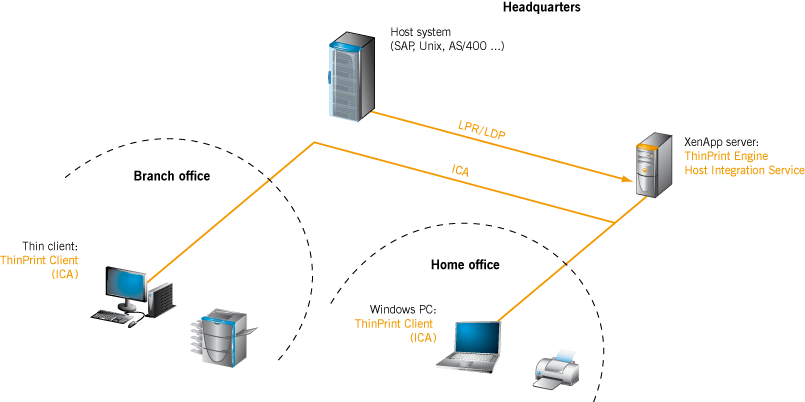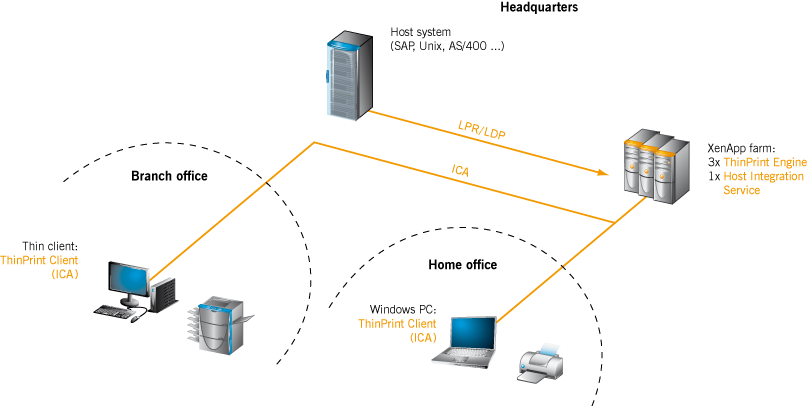The ThinPrint Host Integration Service is a software solution that enables print support for application servers such as SAP, AS/400, iSeries or Unix systems – hereafter referred to as host systems. The Host Integration Service is installed on an application server (here, on a Citrix XenApp server).
How does the Host Integration Service work?
The Host Integration Service receives print jobs as a Line Printer Daemon (LPD) and forwards them to the XenApp session (as an example) from which the print job was initiated. In turn, the ThinPrint Engine compresses the print jobs and then forwards them via ICA protocol across limited bandwidth to the ThinPrint Client.
Once at the client side, the ThinPrint Client decompresses the files to be printed. If necessary, an application is started using parameters (e. g., Adobe Reader) to convert the received data to a print file. Lastly, the ThinPrint Client sends the data to its current printer.
Note! The Host Integration Service will only work if run together with a ThinPrint Engine. For information about system requirements, installation, and configuration of ThinPrint Engine, consult Technical requirements.
Constellations
A typical environment for the Host Integration Service could be as follows: The users in an SAP system use Windows PCs. They connect to a XenApp server with ICA clients installed on the PCs. The Citrix server is connected to the SAP system and provides the users with the SAP GUI for Windows. Protocol for the Citrix sessions is ICA, which is also to be used as print protocol.
There are the following possible constellations:
1. A standalone XenApp server on which the Host Integration Service is installed.
2. A XenApp farm in which the Host Integration Service is installed on one of the servers.
In each of these cases, the Host Integration Service (LPD) receives print jobs from the host system (LPR). The print job contains information about the user who initiated it. In constellation 2 the Host Integration Service must first use this information to identify the server on which the user’s session is running. It then sends the print job to that XenApp server (protocol: TCP/IP1); from there, ThinPrint Engine compresses the print data and forwards it via ICA protocol over controlled bandwidth to the user.
1. strictly speaking: SMB (Server Message Blocks)

